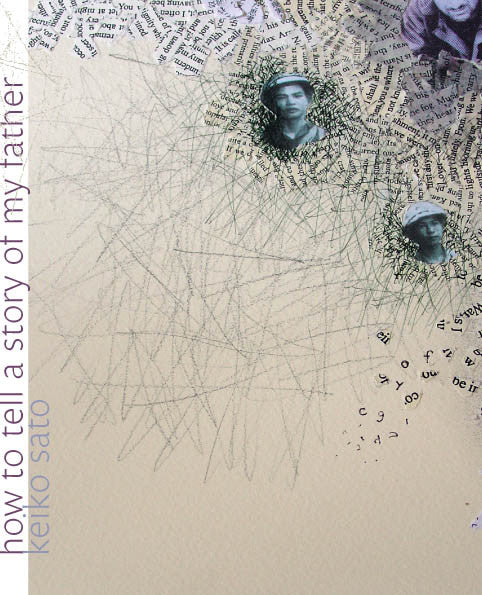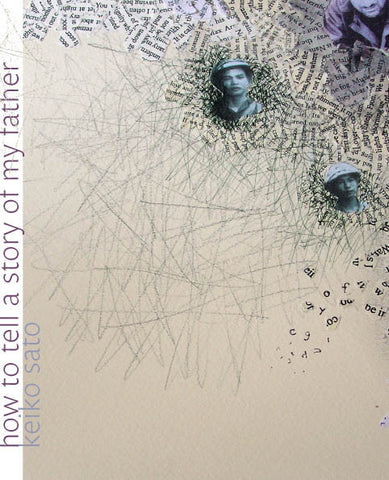Your cart is currently empty!
Art
How to tell a story of my father
+++ +++
+++Keiko Sato+++
978-94-90322-03-8
Montse Hernández i Sala
124
17 x 21
Paperback
Only available in English
This publication is supported by the Netherlands Foundation for Visual Arts, Design and Architecture.
Date of release: November 2009
After battling a major illness which corresponded with her witnessing the September 11 attacks in NYC, artist Keiko Sato radically changed her working methods and started to search for new insights into her life and work. She began digging up memories of her father who served as a Kamikaze Pilot in the Army. It prompted a larger project about the history and survival
politics of her family and her country; Japan. The first part of her trip is documented in a video focusing on her return to Japan and the meeting with her family.
This publication How to tell a story of my father consists of her art work, combined with a series of interviews with cultural and political figures from her father's generation. It also reflects the experiences, interviews and ideas that arose during the making of her project.
Keiko Sato was born in 1957 in Japan and had been working from 1979 for ten years as a midwife and nurse. In 1989 she moved to London and studied Fine Arts at Gold Smith's College and from 1993-1995 at the Jan van Eyck Academy in Maastricht.
Quotation from How to tell a story of my father
'The people who were involved in the incident would never forget what happened to them. Their memories would remain in their mind, and these would eventually be passed on to their children. History is not only the accumulation of chronological events, but also the collective memory of people. We live now, but our present life is connected with the past, and so is our history. Forgotten memories could suddenly come back to our mind. The terrorist attack and kamikaze acts are very different matters. However, what I experienced in New York led me to the memories of my father, although I hardly remember him. It was by sheer chance that I was not born in the time and place where a war was going on. I have not encountered a politically complex and life-threatening situation before. Yet, this may purely be a coincidence or luck. A question then came to my mind: If I were a soldier in the war, must I kill my enemy? 'Yes, I have to. Otherwise, I would be killed. Or I could be tortured and murdered even if I was just a civilian.' That I could be a perpetrator as well as a victim is a frightening thought. I realized that it depends on the circumstances and my personal situation.' - Keiko Sato
€24.95
How to tell a story of my father
€24.95
978-94-90322-03-8
Montse Hernández i Sala
124
17 x 21
Paperback
Only available in English
This publication is supported by the Netherlands Foundation for Visual Arts, Design and Architecture.
Date of release: November 2009
After battling a major illness which corresponded with her witnessing the September 11 attacks in NYC, artist Keiko Sato radically changed her working methods and started to search for new insights into her life and work. She began digging up memories of her father who served as a Kamikaze Pilot in the Army. It prompted a larger project about the history and survival
politics of her family and her country; Japan. The first part of her trip is documented in a video focusing on her return to Japan and the meeting with her family.
This publication How to tell a story of my father consists of her art work, combined with a series of interviews with cultural and political figures from her father's generation. It also reflects the experiences, interviews and ideas that arose during the making of her project.
Keiko Sato was born in 1957 in Japan and had been working from 1979 for ten years as a midwife and nurse. In 1989 she moved to London and studied Fine Arts at Gold Smith's College and from 1993-1995 at the Jan van Eyck Academy in Maastricht.
Quotation from How to tell a story of my father
'The people who were involved in the incident would never forget what happened to them. Their memories would remain in their mind, and these would eventually be passed on to their children. History is not only the accumulation of chronological events, but also the collective memory of people. We live now, but our present life is connected with the past, and so is our history. Forgotten memories could suddenly come back to our mind. The terrorist attack and kamikaze acts are very different matters. However, what I experienced in New York led me to the memories of my father, although I hardly remember him. It was by sheer chance that I was not born in the time and place where a war was going on. I have not encountered a politically complex and life-threatening situation before. Yet, this may purely be a coincidence or luck. A question then came to my mind: If I were a soldier in the war, must I kill my enemy? 'Yes, I have to. Otherwise, I would be killed. Or I could be tortured and murdered even if I was just a civilian.' That I could be a perpetrator as well as a victim is a frightening thought. I realized that it depends on the circumstances and my personal situation.' - Keiko Sato



